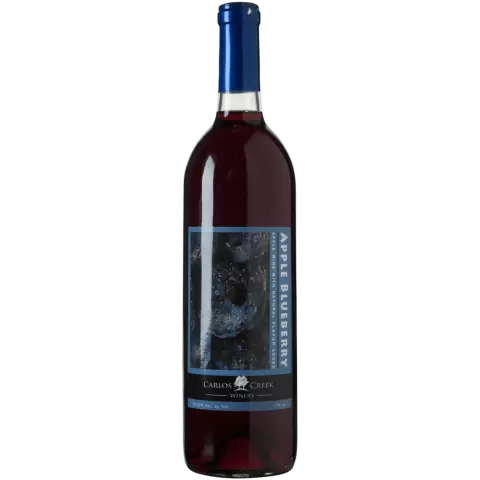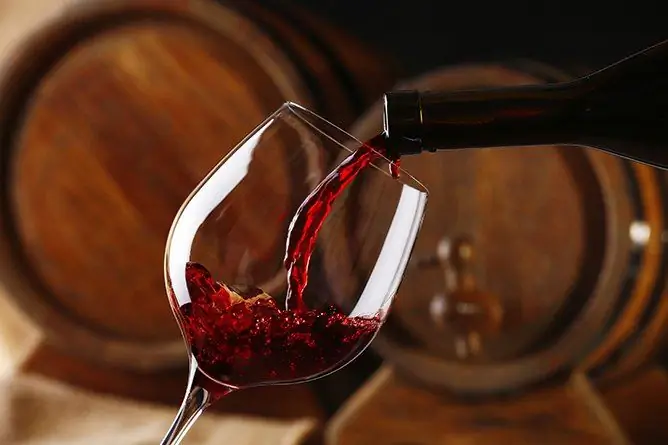- Author Rachel Wainwright [email protected].
- Public 2023-12-15 07:39.
- Last modified 2025-11-02 20:14.
Apple wine
Classic cider is a wine made from apple juice that is fermented without adding yeast. At first glance, everything is very simple - the apples fermented, it turned out to be wine. But the ancient Normans, who invented this drink, treated it very carefully and used for this purpose the best varieties of apples that were grown in special apple orchards. Moreover, they used sour, sweet and bitter varieties of apples in a certain proportion.

The most widespread use of cider was in Spain, where there were always enough apples. The Spaniards believe that they got apple wine thanks to the Spanish sailors. For a long time they were sailing, and they did not have enough fresh water. Instead, they drank apple juice, which turned into wine by itself during the long journey. This apple juice wine lifted the spirits and left the head clear.
In Spain, they love cider so much that they use it instead of water and believe in its medicinal properties, believing that it removes toxins from the body.
In Russia, apple wine was also made. It is known from reliable sources that the empress herself tasted it in 1890 and was completely delighted with it. However, during the Soviet era, cider practically disappeared.
In America, a stronger apple wine called Apple Jack is more common.
According to statistics, cider is by far the most widespread in France, as well as in parts of Spain, Switzerland, Germany and Austria.
How is apple juice wine made?
Cider is made in the same way as any berry-based wine, with the exception of some specifics. For example, apples should not be allowed to oxidize, which is why wine producers constantly clean their mill knives to peel fruit. First, the apples are crushed and squeezed out, which should be infused for some time. After the juice is poured into wooden barrels, put them on their side and left for about 5 weeks to ferment. That's it, after that the cider is ready. Store apple wine at a temperature slightly above zero. Apple wine has about 5-8 rpm. Before being bottled, it is pasteurized and clarified.
Traditionally, cider barrels are made of oak, and a special small hole is made in each barrel lid. This is the hole for the barrel washer, who must be tall and thin, otherwise he will not crawl through the hole. Washers do all the work manually without the use of chemicals.
Today, cider is considered a sparkling wine and is often prepared using various technologies. It happens that it is artificially enriched with carbon dioxide by the method of champagne, or it is reinforced with cognac until the turnover rises to 9-10%. The more alcohol a cider contains, the better it retains a high concentration of carbon dioxide.
Apple juice wine is poured into thick bottles and for secondary fermentation, adding a solution of refined sugar. If you add 8 g of sugar, you get the weakest cider, 12 g - medium, 16 g - the strongest and most sparkling cider. Wine wanders in such bottles for several months, after which they begin to remuage - the bottles are placed almost vertically with their necks down, and every day they are turned around the vertical axis. This causes the yeast and all sediment to collect at the bottom of the cork. The remuage process lasts about two months, after which the bottles are transferred to a cool room, where they are disgorged - removing the sediment from the cider.
Deregistration is also quite an interesting process. The worker takes the bottle by the neck with his left hand, turns it almost horizontally and, using tongs or a hook, pulls out the cork until, under the influence of carbon dioxide, it is pushed out along with the sediment sitting on it. At this point, the worker must have time to quickly turn the bottle upside down, after which he hands it over to another worker for dispensing.
Dosing is carried out by topping up the resulting apple wine with a certain amount of liqueur. This is done in order to make up for the loss of wine as a result of degorging, as well as to give the wine strength and sweetness.
Tradition and consumption of apple wine

It is believed that an apple can easily compete with grapes as a wine base. In Spain and France, cider is highly appreciated. The French province of Calvados is especially famous for the production of cider, where the recipe for its production is carefully kept secret and passed on only by inheritance.
And yet, less and less often in these countries, apple juice wine is used as an independent drink. Increasingly, it was used as a base for apple brandy. For this purpose, the wine is distilled twice, and the resulting apple alcohol is infused in wooden barrels for at least two years.
On the other hand, in Europe, cider, on the contrary, is gaining more and more popularity, since, firstly, it is cheaper than champagne, and secondly, in terms of taste, not only is not inferior, but sometimes even surpasses it.
The taste of apple wine can be varied - sweet, sour, dry. This largely depends on the apple variety and proportions. All categories of citizens can drink apple wine - from small children to very old people (they make non-alcoholic cider for children).
Cider is often served during presentations and gala receptions as a substitute for champagne. For example, in Normandy, there is even an order of the Cider Connoisseurs. Every year, its members don medieval dress and gather in small pubs - ciderreries - to taste the drink and welcome new members of the community.
Here are a few traditions regarding the preparation and consumption of apple juice wine:
- Real gourmets respect only the hand-bottled cider;
- Only six glasses of cider are poured from the bottle, with the bartender raising his hand with the bottle high up, and holding the glass of cider at the bottom;
- Those who drink the last drops of cider must spill out on the floor.
Found a mistake in the text? Select it and press Ctrl + Enter.






